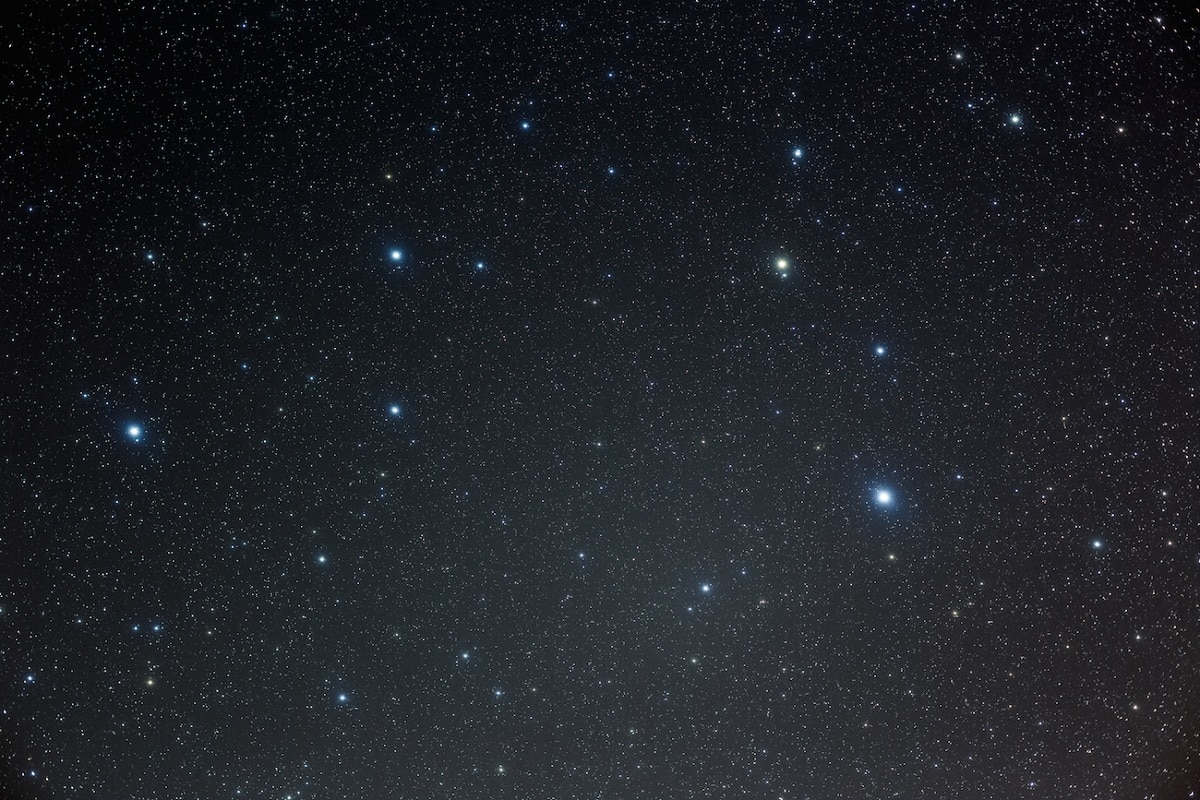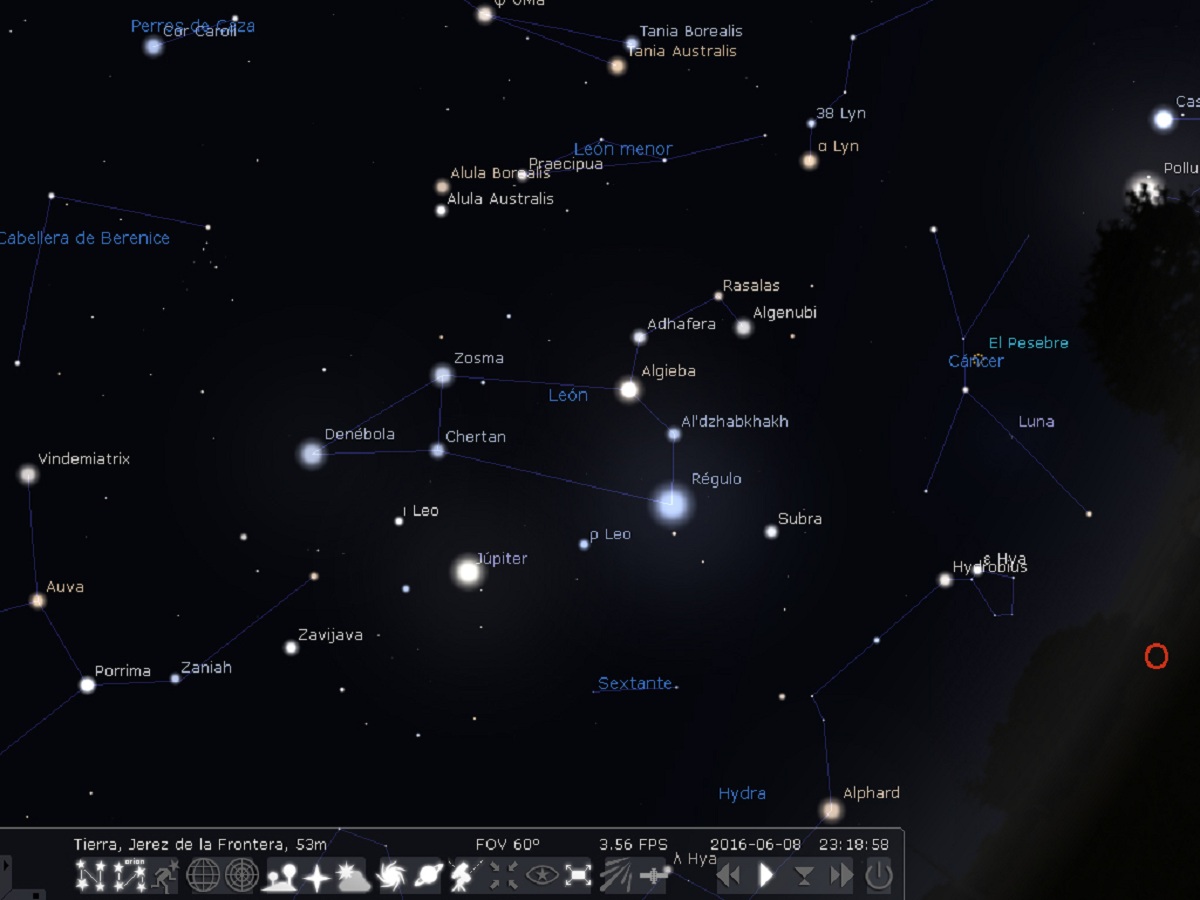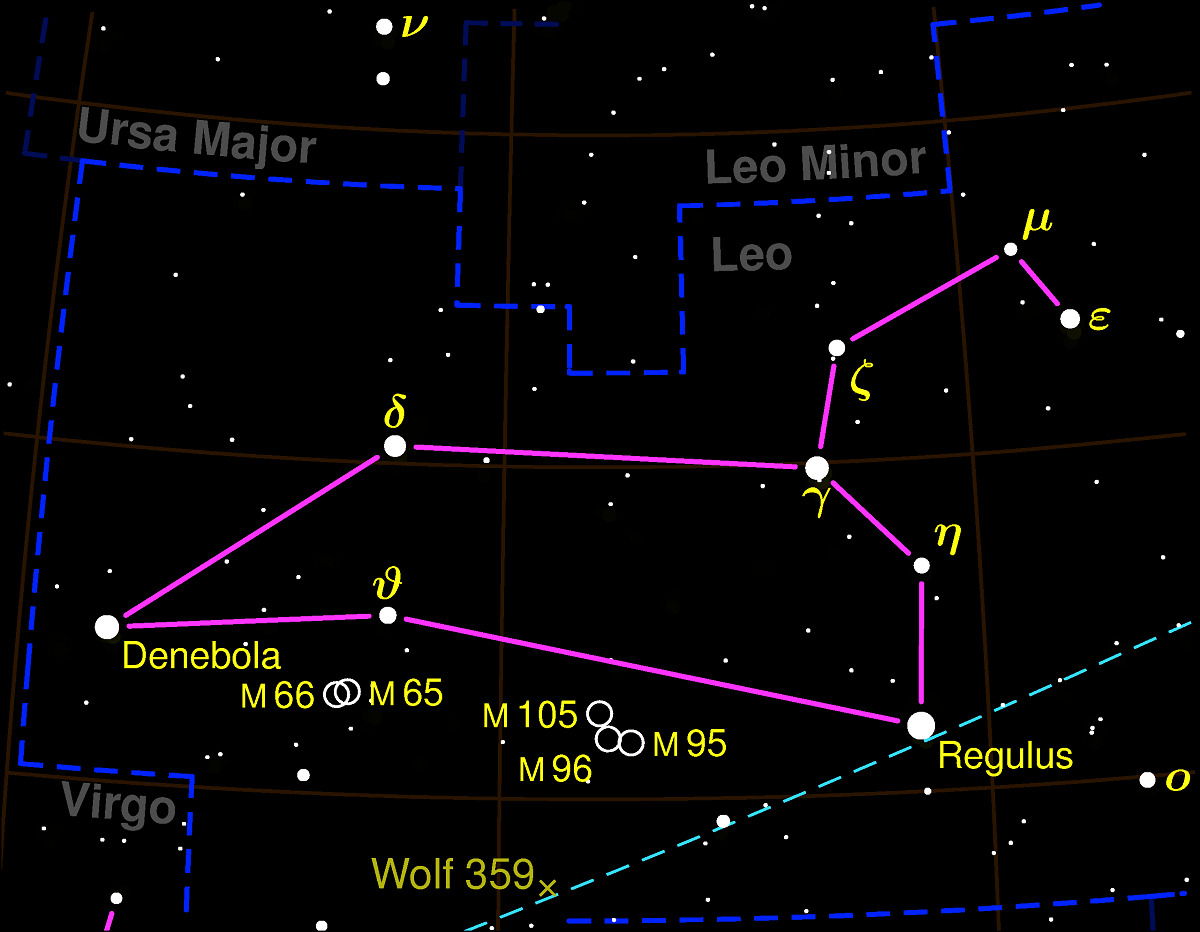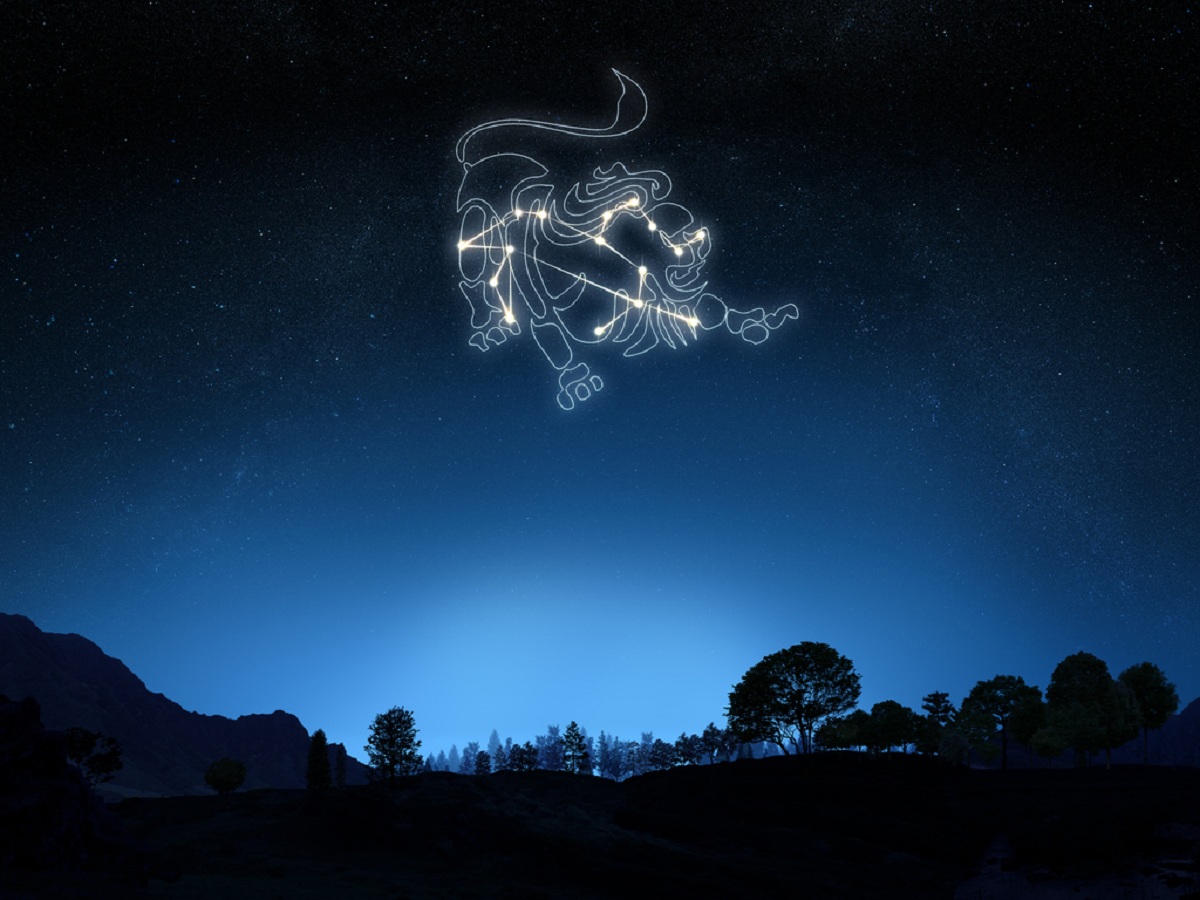
Among all the constellations that we find in the sky that belong to the constellations of the zodiac we have Leo. The constellation leo It is located between the constellation Virgo on your left and Cancer on your right. It has several main stars and there are several associated meteor showers that are usually seen in winter.
In this article we are going to tell you everything you need to know about the constellation Leo and its characteristics.
Key features
There are two meteor showers associated with this constellation, the Delta-Leonids, active from February 15 to March 10, and the Leonidas, active from November 10 to 23. Leo is a large equatorial constellation that represents the lion. In the months around February, it appears higher in the midnight sky. Its brightest star, Regulus, is very close to the ecliptic, the path the sun follows in the sky every year. Every year from mid-August to mid-September, the sun passes through Leo.
North of Regulus, the lion's mane is represented by the curve of the second and third stars. Far from the plane of the Milky Way, the deepest celestial object in this celestial region is the Ninth Star or Weak Galaxy. The brightest of these is the Leo Triplet, which is a close combination of three gravitationally bound galaxies: M65, M66 and NGC 3628.
In Greek mythology, Leo is recognized as a Nemean lion killed by Hercules. His skin was protected by all weapons, and Hercules' arrows deflected from the beast. After strangling the monster, Hercules used its skin as a cloak.
How to locate the constellation Leo
Among the 13 constellations of the zodiac, this is one of the most recognizable constellations in the night sky. Most people find the constellation Leo by first looking for a unique pattern in the dome of the sky: the upside down question mark pattern. This star or asterisk is called the sickle of Leo. Regulus, the brightest star in Leo, marks the bottom of the upside down question mark pattern.
From the perspective of the northern hemisphere, the lion is a friend of fair weather, leaping into the sky in the afternoon around the vernal equinox in March. End of March, April and May are several months to identify Leo, because once night falls, this constellation can be seen and stayed until the wee hours of the morning. Remember to look for a question mark style backwards.
The triangular star in the eastern part of Leo represents the lion's hindquarters and tail. The brightest star in the triangle is called Denebola, which comes from Arabic and means "lion's tail." Like all the stars Leo's stars return to the same position in the sky four minutes earlier each day or two hours earlier each month.
In early April, the constellation Leo peaks around 10 p.m. (11 p.m. local daylight time) and begins to sink below the western horizon at around 4 a.m. (5 p.m. local daylight time). Around May 1, Leo reaches the climax of the night around 8 p.m. Local time (9:00 p.m., local daylight savings time). Similarly, in early May, the mighty Lions begin to settle in the west around 2 a.m. Local time (3 am in summer time). In June, the constellation Leo can be seen descending from the west in the afternoon.
Main stars of the constellation Leo
Let's see which are the main stars of the constellation Leo:
- Denebola: is a bright white main sequence star, also known as Beta Leonis, about 36 light-years from Earth. Compared to Earth, its mass and radius are only 75% larger than our sun.
- Zosma: Also known as Delta Leonis, like Denebola Zosma it is a main sequence white star located about 58 light years from Earth, the star has a mass and radius around twice that of the sun.
- Short: Also called Theta Leonis, along with Denebola and Zosma Chort, it forms Leo's hip in the shape of a glowing triangle. Like the other two Chorts are white main sequence stars, they are 165 light years away from the trio, so the effect is not right.
- Regulate: Also known as Alpha Leonis, Regulus is not only the brightest star in the constellation, but also one of the brightest stars in the night sky. Regulus is a four star system located about 80 light years from Earth, the system consists of the bright Regulus A and three darker stars. Regulus A is a large blue main sequence star with about 4 times the mass and radius of the sun.
- algiebaAlso known as Gamma Leonis, it is a two-star system about 130 light-years distant from Earth. The system consists of two giant binary stars that orbit about 16 billion miles in a circle (26 billion kilometers).
- adhafera: It is also known as Zeta Leonis, Adhafera is a giant white-yellow star about 270 light years from Earth, it is about six times larger in diameter than the sun with about three times its mass.
Mythology
Like various constellations, Leo is also based on the adventures of the Greek mythological heroes and Hercules, the son of Zeus. After being driven mad by his stepmother, the holy hero killed his six children in blind rage. When he recovered from a temporary insanity, Hercules tried to atone for his crimes to make up for his actions. In the end, Hercules was finally left in charge of King Eurystheus, who assigned him a series of tasks.
The first step in these tasks is to kill a lion that has been terrorizing the city of Nemea. The lion is unknown to Hercules, he has a golden coat of fur, arrows and swords cannot penetrate. When visiting the lion's den for the first time, Hercules discovered that his arrow had simply bounced off a beast. On his second visit, the hero blocked one of the two entrances to the study and entered armed with a large club, struck the lion with his club and strangled him.
I hope that with this information you can learn more about the constellation of Leo and its characteristics.


